At the end of its days, the Tyler Hotel, then known as the Milner, was a seedy joint situated in the heart of Louisville’s so-called porno-district at Third and Jefferson Streets. Since its demolition in 1995, the city has condemned and completely destroyed every last building in the area to get rid of adult business. Their efforts failed, as we still have an adult bookstore but no more historic buildings.
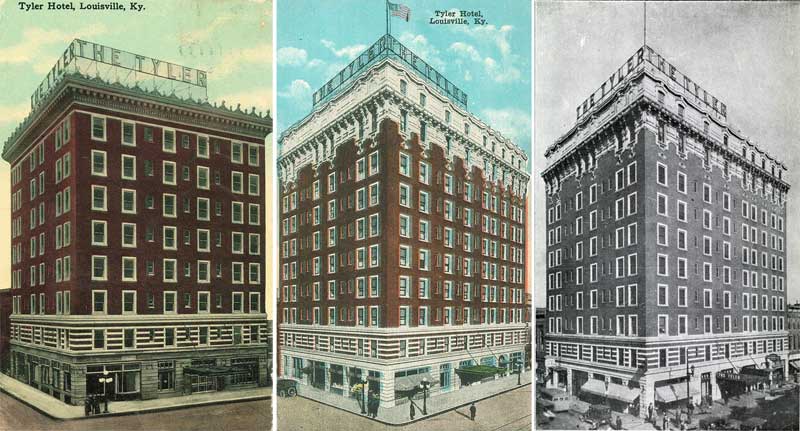
When it opened on December 14, 1911, the Tyler Hotel contained eight stories, 135 rooms each with a private bath, and was conceived in 1909 by businessman Levi Tyler to compete with the fashionable Seelbach Hotel finished six years earlier. It was designed in the Beaux-Arts style by the prestigious local firm McDonald & Dodd.
The building was built of steel with a brick and terracotta curtain wall, considered one of the finest examples of terra cotta application in the city. Sometime later, ,an additional bay and two additional stories with more ornate terra cotta detailing were added (as seen in the views above). Inside, the Tyler Hotel featured an ornate lobby, an Italian garden room, and a cafe.
In the 1940s, the hotel was renamed the Earle Hotel when bought by the Milner Hotel Company and later in the 1960s, it was again renamed the Milner Hotel after a destroyed building sitting in the path of Interstate 65. The hotel operated until 1985 and was placed on the National Register of Historic Places in 1987.
In the late 1980s, there were plans for a complete renovation of the property, but those fell through with the pending expansion of the Kentucky International Convention Center.
Then on November 5, 1995, the state imploded the ten-story structure to make room for the expansion of the Kentucky International Convention Center. The above video was taken from the 5/3 Building on Fourth & Liberty Streets, a couple blocks away. As one person notes on the video, “It’s a big loss… that building had a lot of history.”

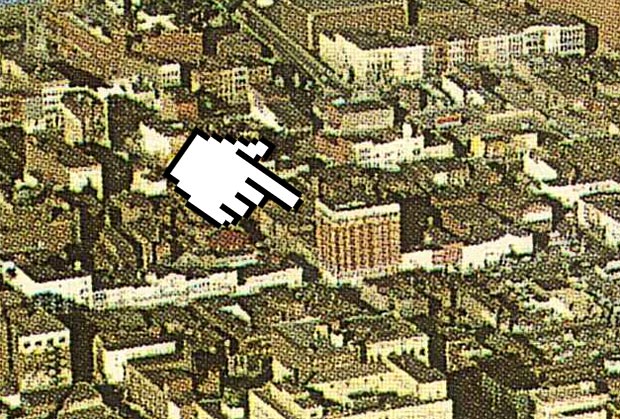
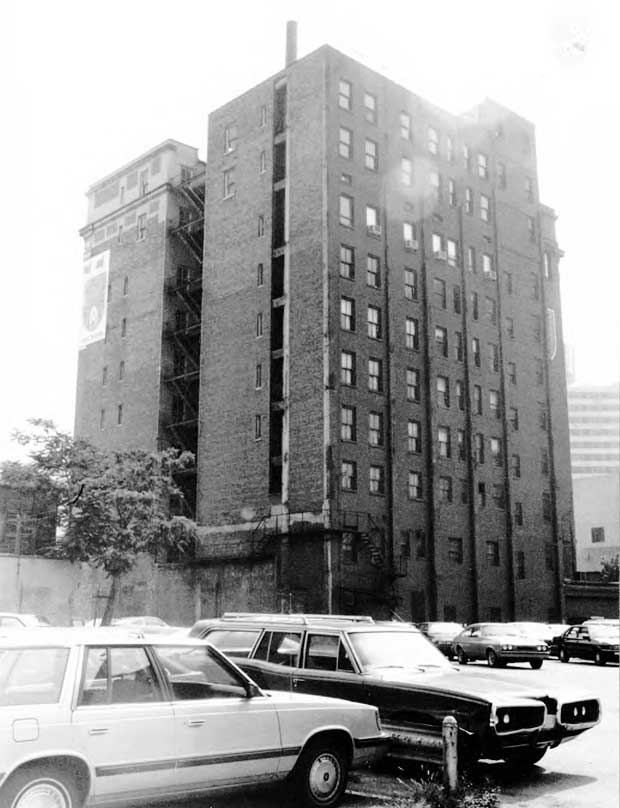
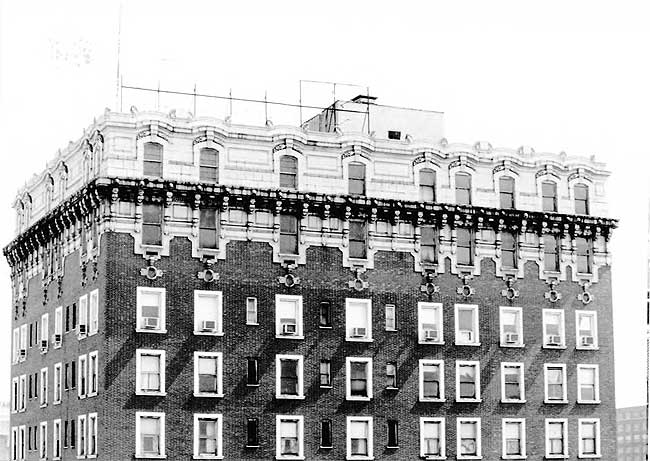
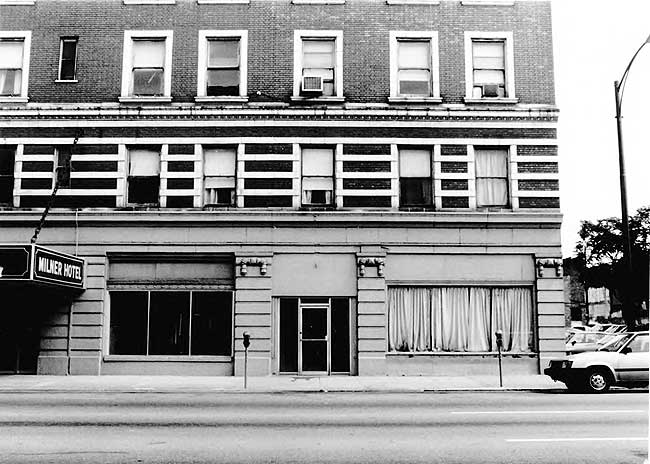
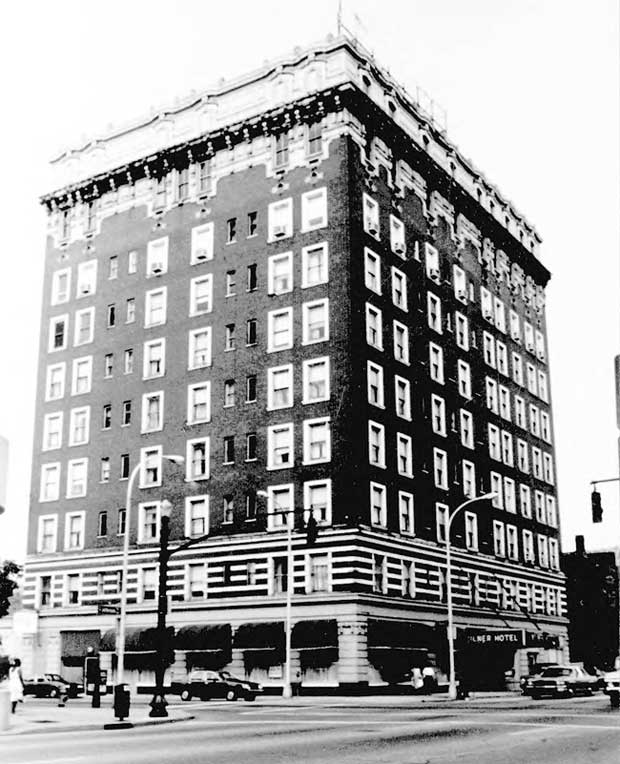


Oh. My. God. That is depressing. Like we couldn’t have incorporated that building into our Convention Center plans. If Abramson doesn’t make it to Frankfort I think we should lobby to get him an ambassadorship on another continent. As long as we get him away from our city.
i heard about this when it was about to happen and took a bunch of snapshots before the implosion. still have those in a box somewhere. the building exterior wasn’t in bad condition, really. and it WAS beautiful and unreproducible. [sigh.]
With all the screaming by some about preservationists trying to save every last building, the reality is that preservationists dropped the ball on this one. Of course, one could argue that preservationists weren’t nearly as organized then as they are today.
Steven! You’re blaming preservationists? For one, they kind of had their hands full back then. The Henry Clay still stands. In 1997, it was listed in The National Preservation Magazine as the most vulnerable building in the country. NPP was around and saving buildings in the 90’s.
But here’s the point: if a building is destroyed, it’s the fault of the people that wrote the development plan that planned the destruction, and perhaps the financial institutions that backed it. Not the preservationist.
Curtis, of course you are correct about who is most to blame. But since the building is gone, doesn’t this mean that preservationists at the time failed to do the things that would see that the building wasn’t torn down? I believe the local landmark law in place at the time wasn’t much different than we have today. “Having their hands full” sounds like an excuse. On the other hand, we didn’t have the Internet we have today for organizing purposes.
At one time Louisville was the implosion capital of the US…Commonwealth Building, Belknap waterfront warehouse, Tyler Hotel, all the historic buildings in the path of the enlarged convention center, etc. Never could understand why they didn’t incorporate a HISTORIC HOTEL into the new convention center.
Preservationists aren’t paid, you realize this right? Saying they dropped the ball is like saying you, as an advocate for transparency, dropped the ball in allowing the Cordish/Fourth St deal. It’s really difficult to recruit committed preservationist and I really don’t think bashing them is what we want to do. They’ll just go bowl instead then who could you blame?
Where did I “bash” preservationists? After all, I consider myself as one amongst them.
Saying the ball was dropped is a kind of self-critical postmortem. It’s just a fact.
You’re right. I just got excited. Sorry. @Steve Magruder –
The top photograph just breaks my heart. “Modern” downtown Louisville looks bleak and empty compared to the city that stood there a century-ago. However, I do like that picture because it reveals what the arena district looked like before the bombings. I had always wondered what the building on the now empty corner of Whiskey Row looked like; now I have a slightly fuzzy idea.
I was out there somewhere that morning. Just as I was when we “did in” the beautiful old building at 4th and Liberty (I think that was the Will Sales Building) where the B&W Tower now stands – that was back in 1983 or so. And a group of us watched the Belknap implosion from across the river in the park. And like Barhorst, I recall the old Commonwealth Building at 4th and Broadway – but as I recall, it really wasn’t all that old, was it?
I was also in a group that went throught the old Savoy Theater which was near the Milner on Jefferson. The Savoy once housed the Jefferson County Democrat Party HQ back in the early 1900s. It was a legitimate theater first, then a burlesque hall, and ended life in the porno business. As I recall Allan Steinberg led that group.
Wonder what is next?
Jeff, the Commonwealth Building was constructed in 1928 by James Graham Brown, was beautiful art deco architecture, and after an addition in 1955 was the tallest building in the state.
Ah, 1928. Ok, it was older than I recalled. Thank you David. Wasn’t there some club owned by Mr. Brown on that site, the Ha-Wa-Ii or something? I have that in one of those odd corners of my mind.
The club I think you are referencing Jeff was in the basement of the Heyburn building across the street from the Brown Hotel. Some of it is still there, pacific rim motif and all.
My Dad has a clock from the TYLER Hotel that his Dad bought and put in his barber shop in 1912. He just asked me the other day to see if I could find some history of the hotel or clock.
The clock says “Otto R. Biery” Charles C. Wright & Co. Jewler Opticians
Corner 3rd & Jeff. Tyler Hotel”
Does anyone know where I can get some more info on any of this so I can print out and show my Dad.
Thanks
Linda
Tyler Block was a three-story building in Louisville, Kentucky best known for its landmark 200-foot-wide (61 m) Renaissance Revival limestone facade. It was located on the north side of Jefferson Street between Third and Fourth streets. Built in 1874, it was designed by Henry Wolters and named after its owners, the Tyler Family. It was razed 100 years later in 1974 to make way for what is now the Kentucky International Convention Center.
Many campaigned to have the Tyler Block’s facade incorporated into the center, but the new building was instead built in the fashionable style of the time, with concrete walls and few windows.
Henry S. Tyler (September 20, 1851 – January 14, 1896) was Mayor of Louisville, Kentucky from 1891 to 1896. His grandfather, Levi Tyler, was a founding father of Louisville and successful businessman. His family continued to be wealthy and owned, among other properties, Louisville’s Tyler Block. Henry Tyler attended Schatlock Hall Military Academy in Minnesota. He returned to Louisville to work as a clerk and bookkeeper and eventually established his own insurance company.
He was elected to Louisville’s Common Council as a Democrat and then Mayor in 1891. He was re-elected in 1893 under a new city charter, which made him the first mayor elected to a four-year term. Tyler had been instrumental in drafting the new charter.
He died in office in 1896 and was buried in Cave Hill Cemetery. Louisville’s Tyler Park and the surrounding neighborhood were named for him.
[source: From Wikipedia, the free encyclopedia]
Also note: There are historic photos of the Tyler Block that are accessible via the U of L Photographic Archives web site. Give it a whirl!
To clarify, the Tyler Block and the Tyler Hotel were both located on the north side of Jefferson St. on adjacent blocks as shown on Branden’s BS Postcard Archive view [The Tyler/Milner Hotel was between 2nd and 3rd and the Tyler Block was between 3rd and 4th].
I am curious to know if anyone has information or can confirm that the Tyler Hotel was once owned or managed by Edward Bosler. Is there any record of the name Bosler with the Hotel? Edward Bosler was my grandfather. Please respond to my email address: fbozler@gmail.com
My Uncle Charles E. Goodman , worked and Managed, many of the Milner Hotels. He worked at the one in Nevada, Grand Rapids Michigan,and The one in Louisville Ky. I’m sure there were others, but I was a child at the time. 70’s and 80’s were the times I know for sure.